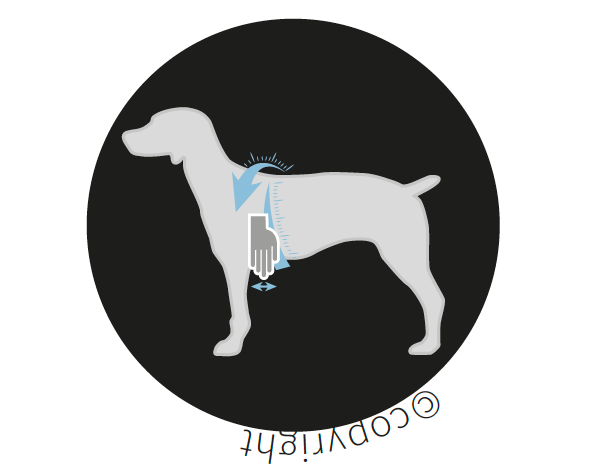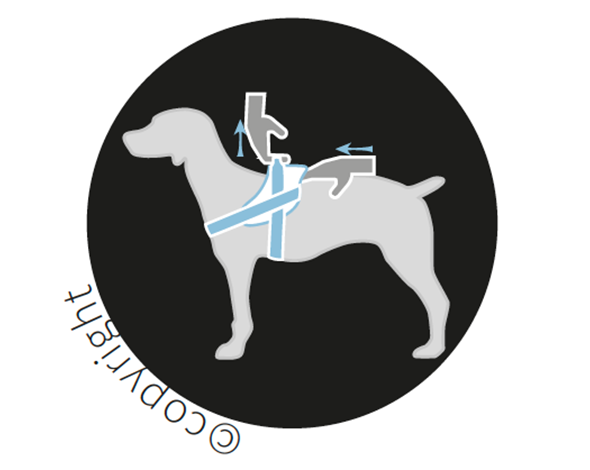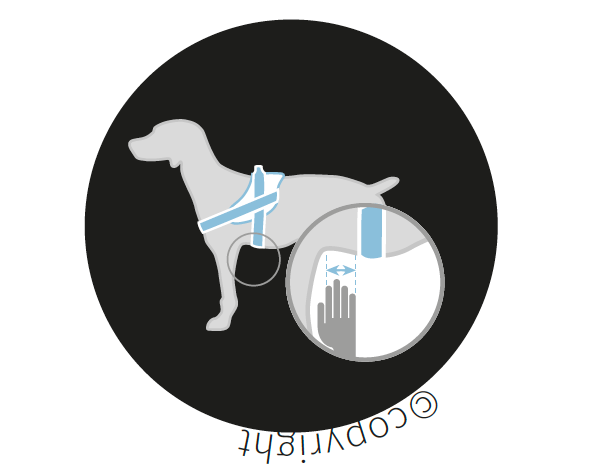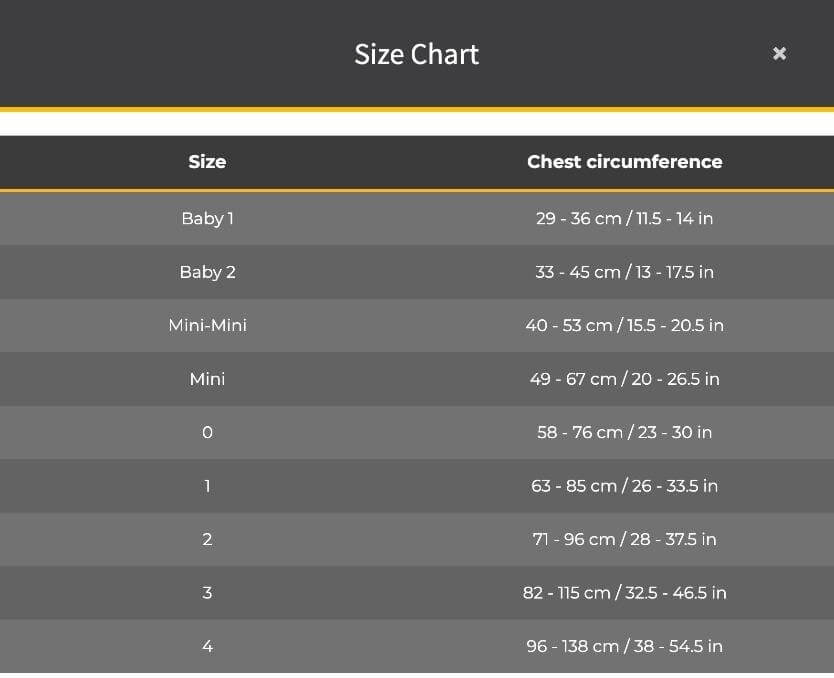How To Correctly Measure & Adjust Your Dog Harness
Measuring Your Dog | How To Fit The Harness | How To Adjust The Harness | Size Guide
For the safety and comfort of your dog it is essential to measure your dog accurately to ensure harnesses are fitted correctly. The harness should be snug but not too tight. A wrong sized harness, or an incorrectly fitted harness, can cause injury and discomfort to your dog.
How to measure and fit a dog harness
For more a more detailed guide on how to measure your dog and how to correctly measure and put on Julius-K9® harnesses see below.
Measuring Your Dog
You will need to measure you dog’s chest circumference to know which size of harness you need.
Step 1) Place four fingers behind the dog’s front legs for harnesses sized 0 to 4, and two fingers for harnesses sized Baby 1 and Baby 2. Roughly for small dogs there should be 1 inch behind front leg and for medium and large dogs there should be 2 inches. *NOTE* The dog should have full swing of the front legs without the belly strap or buckle coming into contact with the armpit or elbow of the dog
Step 2) The finger furthest away from the front legs is where you will be measuring the circumference of the dog’s chest.
Step 3) Use a fabric tape measure to wrap around the dog’s chest. The tape measure should be snug, without being too tight or baggy.
Step 4) The dog’s chest size is where the end of the tape measure and the remaining portion meet.
Fitting The Harness
The harness should be snug, but not too tight. There are three checks to do that make sure the harness is fitted correctly. An incorrectly fitted harness can cause discomfort and injury
Check 1 - Tightness
A well fitted harness should allow enough room for you to fit your fingers between the dog’s back and the harness.
Check 2 – Bottom Strap Location
The bottom belly strap should be four fingers width away from the front legs for harnesses sized 0 to 4, and two fingers for harnesses sized Baby 1 and Baby 2.
Check 3 – Top Strap Location
The front chest strap should fit comfortably against the chest without drooping toward the legs or riding up toward the neck.
High Front Strap: If the harness is too small (above image), the front strap will sit too high and put pressure on the dog’s neck.
Low Front Strap: If the harness is too big (above image), the strap will drop too low and not distribute pressure to the chest area as intended.
The dog can also back out or escape from the harness if the front strap is too high or low.
Adjusting The Harness To Fit Correctly
The video below shows how to easily tighten and adjust the harness correctly:
Tightening & Losing The Strap
Step 1) Open the strap and loop it through the oval ring on the front of the harness.
Step 2) Close the strap on the inner side so the hook loops are facing each other.
Step 3) Set between the Max. and Min. adjustable size (image above).
How Tight Should A Harness Be?
The harness should fit snugly on the chest area. You should be able to fit two fingers between the harness and the dog.
If the strap is too loose, the dog can slip out of the harness. An overly tight strap will mean the harness is uncomfortable and may cause chafing.
Securing The Handle
The harness handle on the IDC® Powerharness has 4 different fastening options. It is possible to secure only the INOX® ring or only the handle, or both, or neither.
Handles on IDC® harnesses (sizes Mini and Mini-Mini) can be secured/ covered up with hook & loop fastener.
These fastening options minimise the risk of the dog getting caught on something by the handle. This is especially important when the dog is off-lead and is running free.
What If The Dog’s Tries To Back Out Of Harness?
In case your dog attempts to slip out of the harness by backing out of it, or tries to pull its head out of the collar, avoid pulling the leash.
IDC® Powerharness Size Guide
Specific sizing guides are be available on every harness product page on the Julius-K9® UK website. But below is an overview of the sizing of the IDC® Powerharness.
IDC® Powair Size Guide
Sizing for the IDC® Powair summer dog harness.
JK9® Paw Patrol Harness
Sizing for the PAW PATROL Harness
JK9® Multivest Harness
Sizing for the Multivest












